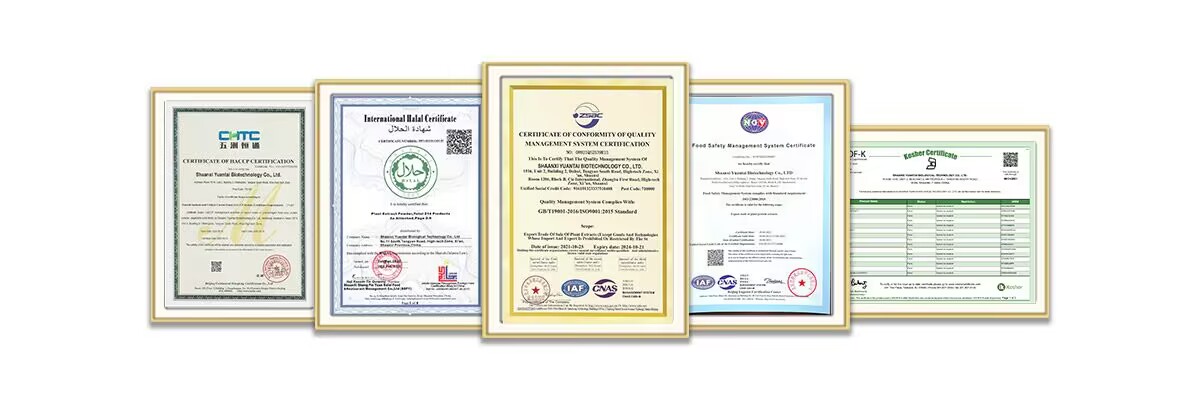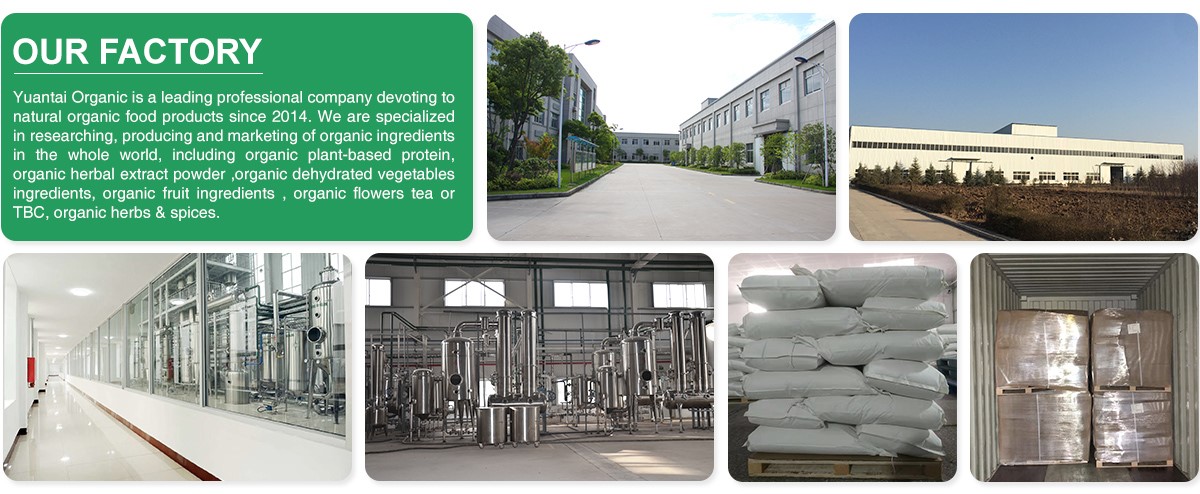p-coumaric acid powder
Molecular formula: C9H8O3
Molecular weight: 164.15802
Detection method: HPLC
Delivery time: 1-3 days
Stock: In stock
Certification: EU&NOP organic certificate, ISO9001, ISO22000, Kosher, Halal, HACCP
Payment method: T/T, VISA, X transfer, Alipay...
Shipping: DHL, FedEx, TNT, EMS, SF
- Fast Delievery
- Quality Assurance
- 24/7 Customer Service
Product Introduction
What is p-coumaric acid powder?
P-coumaric acid powder is soluble in ether, hot alcohol and hot water, slightly soluble in benzene, and insoluble in petroleum ether. p-Coumaric acid is widely present in various plants and vegetables, such as green peppers, carrots, tomatoes, and garlic, which are rich in p-coumaric acid. It is a plant metabolite with antioxidant and anti-inflammatory activity, widely used in biomedicine, food and cosmetics industries.
Also known as hydroxycinnamic acid, it can be generated from phenylalanine under the catalysis of phenylalanine ammonia lyase and cinnamate hydroxylase, or directly from tyrosine under the catalysis of tyrosine ammonia lyase. The latter has a short route, but the efficiency is not high because tyrosine ammonia lyase has low activity and cannot tolerate high substrate concentrations. It has antibacterial, antioxidant and cardiovascular disease prevention effects. It is also a precursor or intermediate of many important compounds and is widely used in food, cosmetics and medicine.

Uses:
1. Medicine: It can be used as a medicine, and has different degrees of inhibitory effects on Staphylococcus aureus, Shigella dysenteriae, Escherichia coli and Pseudomonas aeruginosa; animal experiments have shown that it not only has a lipid-lowering effect, but also has the effect of reducing the occurrence of atherosclerosis.
2. Agriculture: In the pesticide industry, it is used to produce plant growth promoters, long-acting fungicides and fruit and vegetable preservatives. In addition, it can also be used as a chemical reagent for the determination of uranium and thrombosis, and used in the production of ethylene plug oil hanging four, the main raw material of photosensitive resin.
3. Cosmetics: It has an inhibitory effect on the activity of tyrosinase, monophenolase and diphenolase, resulting in a 50% decrease in the activity of monophenolase and diphenolase. It is used in cosmetics to inhibit the production of melanin.
Due to its wide range of uses, an industrialized method for producing p-hydroxycoumaric acid is needed to meet market demand
Production method:
A yeast strain, Rhodotorula rubra OMK-2, was screened from the soil of a cinnamon plantation. The yeast strain has the ability to produce natural p-coumaric acid and is used in the production of natural p-coumaric acid. A method for producing natural p-coumaric acid, comprising the following steps:
1. Under sterile conditions, a full loop of bacterial liquid is evenly spread on a solid slant culture medium from a glycerol tube, and cultured in a biochemical incubator at 26-30 degrees for 24-48 hours; wherein the bacterial liquid is yeast Rhodotorula sp.OMK-2;
The solid slant culture medium formula includes the following ingredients: 1.0-3.5% glucose, 0.1-1.0% potassium dihydrogen phosphate, 0.05-0.3% sodium chloride, 0.1-1.0% yeast extract powder, and 0.1-1.0% corn steep liquor;
2. Seed culture: under sterile conditions, a full loop of a strain with good growth is inoculated from a cultured solid slant with an inoculation shovel and inoculated into a sterile seed culture medium, and the initial pH of the seed culture medium is 2.0-3.5%. 5-8, culture the bacteria to the logarithmic growth phase at a culture temperature of 28-35℃ and a rotation speed of 200-500rpm;
The seed culture medium formula includes the following ingredients: 1.0-3.5% glucose, 0.1-1.0% potassium dihydrogen phosphate, 0.1-0.6% urea, 0.05-0.5% magnesium sulfate, 0.05-0.3% sodium chloride, 0.1-1.0% yeast extract powder and 0.1-1.0% corn pulp;
3. Fermentation: The seed liquid cultured to the logarithmic growth phase is inoculated into the fermentation medium at a volume ratio of 5-15% under sterile conditions; the initial pH of the fermentation medium 6.8-7.2.0, ferment for 70-100h at a temperature of 30-40℃, a stirring speed of 200-500rpm, and a ventilation volume of 1:0.5; the fermentation formula includes the following components:
Glucose 2.0-5.0%, potassium dihydrogen phosphate 0.1-0.5%, urea 0.1-0.5%, magnesium sulfate 0.05-0.5%, sodium chloride 0.05-3%, yeast extract powder 0.1-1.0%, ammonium sulfate 0.1-0.5%, tyrosine 1.0-2.0%.
4. Extraction: Extract what is needed from the fermentation broth.
In a preferred embodiment of the present invention, the steps of step 4) are as follows: After the fermentation is completed, the fermentation broth is heated to inactivate the bacteria, and then the ceramic membrane is filtered to remove the bacteria, the membrane filtrate is extracted with an organic solvent or the membrane filtrate is concentrated, and then the concentrate is directly acidified with dilute acid and separated and purified by low-temperature crystallization.
Efficacy and effects
Medical field
1. Reduce gastric diseases: Certain bacteria in the human gastrointestinal tract will convert nitrates into nitrites. Nitrite forms nitrosamines with proteins in food in the acidic environment of the stomach, while p-coumaric acid in fruits and vegetables can bind nitrates and prevent them from converting into nitrosamines, thereby reducing the risk of gastric diseases.
2. Reduce the occurrence of atherosclerosis: The bad cholesterol in the blood vessels will become worse after being attacked by peroxides, and then adhere to the blood vessel walls. When a large amount of bad cholesterol adheres to the blood vessel walls, it will gradually harden to form atherosclerosis, which will then cause a series of cardiovascular diseases. This product can capture peroxides and reduce the possibility of atherosclerosis.
3. It has the effects of clearing away heat and dampness, promoting blood circulation and removing blood stasis, detoxifying and eliminating carbuncle, and promoting bile, and can play a role in the treatment or conditioning of various diseases.
4. It has antioxidant activity, has a strong scavenging effect on hydrogen peroxide, superoxide free radicals, hydroxyl free radicals, and peroxynitrite, and has a quenching effect on singlet oxygen. While quenching free radicals, it can also inhibit enzymes that produce free radicals and promote the production of enzymes that scavenge free radicals.
5. It has anti-inflammatory effects and can reduce inflammatory responses in the body, which is meaningful in the treatment of some diseases or the prevention of inflammatory development.
6. Immunomodulatory effects, which can regulate the body's immune function and help maintain the balance and normal function of the immune system.
7. Anti-platelet aggregation and cardiovascular protection: By inhibiting platelet aggregation, it helps to reduce the risk of thrombosis, thereby protecting the health of the cardiovascular system and preventing the occurrence of cardiovascular diseases such as myocardial infarction and stroke.
8. Anti-mutagenic activity: It has a good inhibitory effect on Salmonella mutations induced by bleomycin, hydrogen peroxide and IQ-type quinoline mutagens, and can also inhibit the activity of mixed-function oxidases, as well as somatic and sex cell mutations caused by cyclophosphamide.
9. It has an inhibitory effect on bacteria: For four different strains such as Staphylococcus aureus, its minimum inhibitory concentration (MIC) is 250 micrograms/ml. It is also effective against Bacillus subtilis, etc., and can inhibit the quorum sensing of Chromobacterium violaceum 5999, Agrobacterium NTL4 and Pseudomonas chlororaphis, thereby achieving an antibacterial effect.
Daily chemical field:
1. Whitening and lightening: It has a certain inhibitory activity of tyrosinase, can reduce the production of melanin, and help whiten and lighten skin spots, so it is used in whitening products and anti-freckle creams.
2. Anti-inflammatory and anti-inflammatory: It has anti-inflammatory effects, can reduce skin inflammation and sensitivity, and is often added to sensitive skin products, anti-acne products and soothing lotions.
3. Antibacterial: It has a certain inhibitory effect on some bacteria and fungi, and can be used in daily chemical products such as antibacterial hand sanitizers, facial cleansers and antibacterial soaps.
4. Sunscreen: It is used as an auxiliary ingredient in some sunscreen products to help protect the skin from ultraviolet damage.
Food field:
1. Food preservatives
It has antioxidant properties and can be used as a natural food preservative to inhibit oxidation reactions in food, reduce fat oxidation and food spoilage, and help extend the shelf life of food.
2. Food flavor enhancer
It has an aromatic smell and can increase the aroma and taste of food. It is often used as a food flavor enhancer for the preparation of seasonings, spices and flavors.
3. Food pigments
It can be used as a natural food pigment in some food processing to give food a specific color.
4. Food nutrient enhancer
It is a bioactive substance with health-care effects such as antioxidant, anti-inflammatory and antibacterial, and is used to prepare some nutrient-fortified foods.
Certificates
YTBIO is developing in an all-round way. We have our own factory, quality inspection and R&D team. We are committed to providing customers with the best quality P-coumaric acid powder and services. It is our original intention to let every consumer enjoy high-quality and healthy products. If you have any needs or questions about our products, please feel free to contact us and we will reply you as soon as possible.

Packaging and Shipping


Our Company and Factory

_1737093401309.png)

